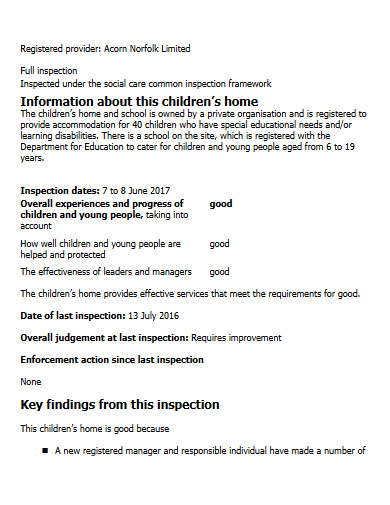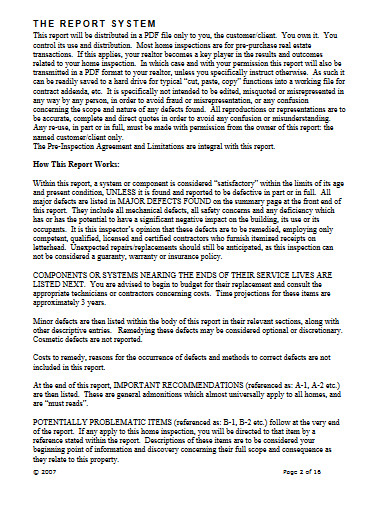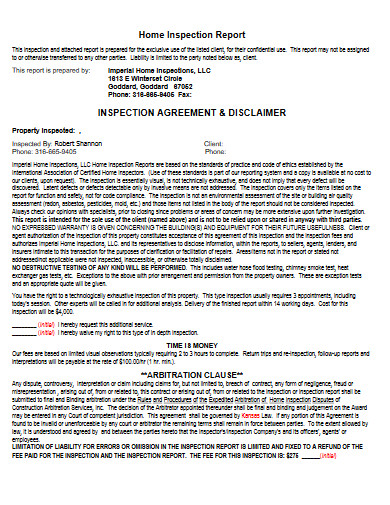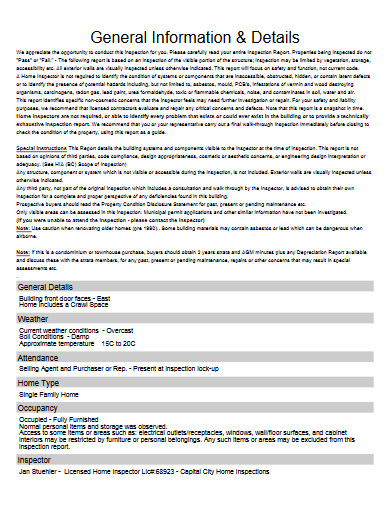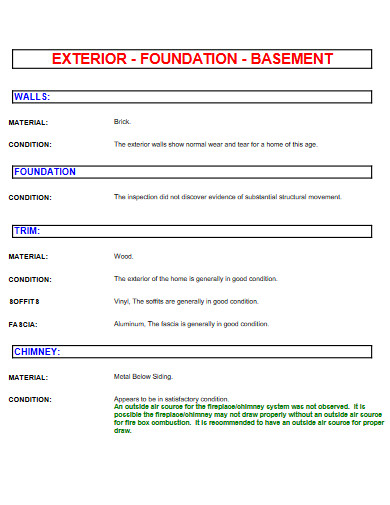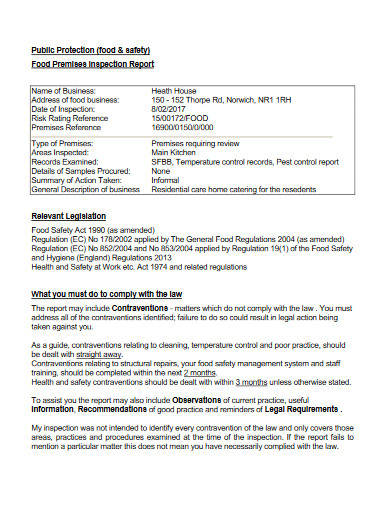10+ Home Inspection Report Examples to Download
Requesting a house inspection or home inspection is necessary for most home buyers, which is a smart move. It’s one way to ensure that the house they’re about to purchase is safe and meets general standards. And it’s your responsibility as a certified home inspector to determine that. Your job is to give home buyers a detailed breakdown of a house’s overall condition. Your findings can be a deciding factor between a buyer purchasing or not purchasing a residential real estate property. We know that your job isn’t easy. But we can help you make it slightly easier, at least. In this blog, we’ll show you our Home Inspection Report Examples that you can use for your job! View each of them below!
10+ Home Inspection Report Examples
1. Home Inspection Report Template
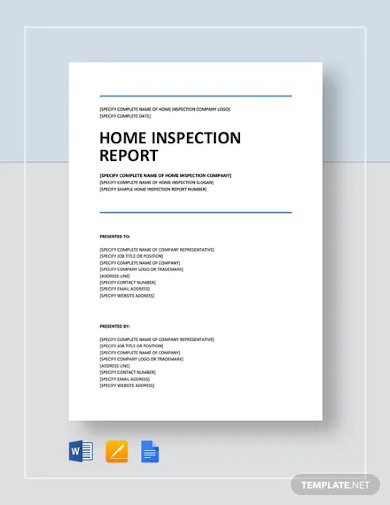
2. Sample Home Inspection Report
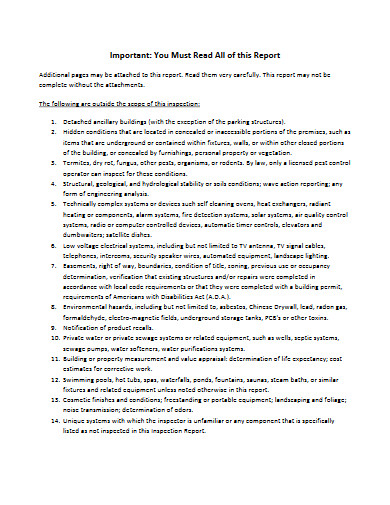
3. Home Inspection Report in PDF

4. Children’s Home Inspection Report
5. Home Inspection Report Example
6. Residential Home Inspection Report
7. Basic Home Inspection Report
8. House Inspection Report Template
9. Residential Home Inspection Report Form
10. Home Inspection Report Format
11. Home Food Premises Inspection Report
What Is a Home Inspection Report?
A home inspection report is a report document that discusses the overall condition of a residential property after inspection. It’s a specific type of pre-purchase inspection report. A home inspection report is basically the same as a building inspection report. But its scope is smaller because it only focuses on a residential property.
In your profession as a home inspector, part of your job is to produce a home inspection report after inspecting a property. The home buyers (your clients) will ask for it before they finalize everything to purchase a house.
What Home Inspectors Do in a Home Inspection
As a home inspector, what you’ll do is conduct a visual check of a residential property—everything from its ins and outs. You have to assess every system from the plumbing, electrical, and HVAC. You also need to inspect the living room, bedrooms, bathroom, attic, roof, basement, etc. It’s also your job to determine what parts of the house need immediate repairs. The purpose of your job is to check if a home is a liveable residence for the buyer or if it’s a property worth purchasing or investing in. After the inspection, you have to outline your findings in a home inspection report.
How to Create a Home Inspection Report
If you’re a rookie home inspector, our basic guide below can help you familiarize the process of making an inspection report. But if you’re a tenured home inspector, this guide will serve as your refresher. So without further ado, here’s the process of formulating a home inspection report.
Step 1: Emphasize Your Name as the Inspector
Your name should be clear at the beginning of the report as the official home inspector. It’s for formality and clarity on who inspected the residential property. To make the report more credible, you can also include your home inspecting company’s name and logo on the cover page.
Step 2: Write Short Details About the Property
Before you discuss the property’s condition, you should provide critical details about it first. That includes its location address, size, type, number of rooms, raw materials, and many more. You can also include information about the property’s history, such as when it was built and who was its previous owners.
Step 3: Provide Explanations of the Property’s Current State
After showing an overview of the property, you can then proceed to discuss its current state. In doing so, you can divide your report into different sections. Each section is the different areas or systems of the house. And in each of them is where you should explain their condition. Be transparent to the home buyers. If there are glaring issues with the property, don’t hesitate to include them in the report. In fact, it’s the red flags that you should highlight in your blank home inspection report.
Step 4: Include Images
Images are an excellent means to show evidence of something that someone is claiming. That said, make sure to take photographs of the property’s various areas. Issues such as cracks on the walls, damages to the pipes, faulty wirings, and whatnot are red flags you take pictures of. Put each of them in their right place in the report for the home buyers to see.
FAQs
Can home inspections hinder deals?
A big yes. The results of home inspections can discourage buyers from purchasing a residential property. If a home inspector found major issues with the house, he or she will inform the buyers about them. If you place yourself in a buyer’s shoes, of course, you’ll have second thoughts about purchasing the property.
What are the frequent home inspection issues?
A report from Windy City Home Inspection Inc. says that 86% of home buyers who hired a home inspector found glaring problems in their property. These problems are:
- Roofing
- Plumbing systems
- Electrical systems
- Windows
- Structural damages
Can a house seller get a copy of a home inspection report?
The house seller can only get a copy of a home inspection report if the buyer grants it through written permission or authorization. Only the buyer has the power to grant permission because he or she is the one paying for the inspection. That makes the home inspection report as his or her property.
You might’ve not realized it yet, but your job as a home inspector can save lives. Checking the safety level of each property you inspect can be the difference between a family living a comfortable or inconvenient life. So make sure that your inspection reports are accurate. Download our Home Inspection Report Template to make things easier for you!



